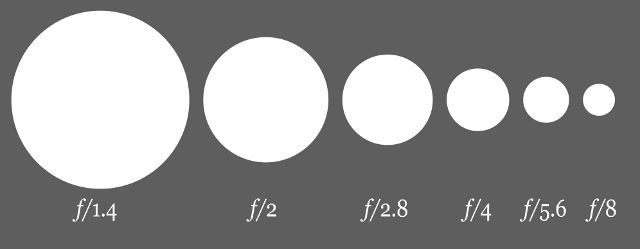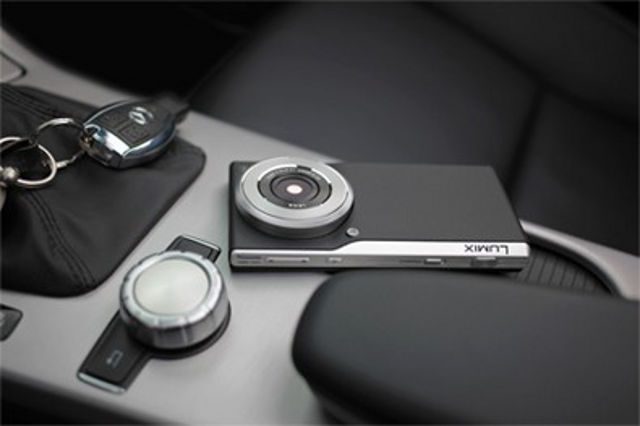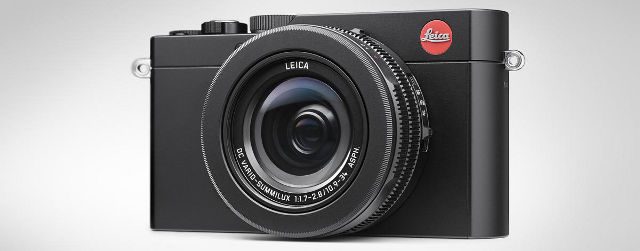SUMMARY
This is AI generated summarization, which may have errors. For context, always refer to the full article.

MANILA, Philippines – Despite the sudden boom of smartphones, digital cameras are still a hot commodity. Companies continue to innovate with new sensors and lenses, and better capabilities.
However, one cannot help but be confused on what camera to buy because of all the jargon that accompanies them.
Let me clear some things up and help you buy the camera that will suit you, whether you’re on the budget or an enthusiast.
What an image is
Before I go into the technicalities of the camera, I should first explain what makes an image: aperture, shutter speed and ISO (in the sensor). It’s the balance of the three that determines the exposure (brightness or darkness) of an image.
Aperture is the lens opening, determined by an f-number (e.g. f2). Imagine yourself squinting, that’s the same impact the aperture has. It determines how much light will enter in a specific amount of time. A low f-number will be a big opening and a high number makes for a small opening, thus, f2 will let more light in than f16.
Shutter speed will determine how long the sensor will be exposed to the light. It’s determined by fraction of a second (1/40, 1/500, etc) and seconds.
ISO refers to the sensor’s sensitivity to light, and is an acronym for the International Standardization Organization, which was instrumental in standardizing sensitivity settings. A low number means it is less sensitive and a high number means it’s highly sensitive. Because of this, we use ISO 100 for a sunny day and ISO 1600 or above for lowlight or night time.

Sensor and megapixels
The first thing that manufacturers boast is the amount of megapixels (mp) their camera has, implying that more is better. It’s only half true because there is another factor that is often overlooked – the size of the sensor.
Budget compact cameras start with a sensor sized at 1/2.7” (measured diagonally) while most compacts have 1/2.3”, both of which are very close to the sensor of most smartphones today at 1/3.2”.
More pixels on a sensor will mean the resulting image will be more detailed, but at a cost. Putting more pixels will make it generate more heat (because light is basically heat) thus, resulting in what is called ‘noise’ at high ISOs.
Recently, DxO labs released their analysis of the iPhone 6 and iPhone 6 Plus and it scored a tad more (82) than the Samsung Galaxy S5 (79) and the Sony Xperia Z3 (79). Why is this important? The S5 has 16mp on its main camera, the Z3 has 20.7mp while the latest iPhone has 8mp. (READ: Four words for Photokina’s camera offerings)
More than the amount of pixels, what’s important is how a camera handles every bit of the sensor in order to reduce noise and increase total detail.
You can only go so far with a very small sensor, and that’s why companies are now putting larger ones in their compacts in pursuit of better images. You will see new models boasting sensors sized at 1/1.2”, 1”, and even 4/3” (known as Micro Four Thirds) with the amount of pixels varying from around 12 to 20 megapixels. With the bigger size and maintaining the same range of pixels, the new compact cameras now have a cleaner output even in medium to high ISOs compared to yesterday’s lineup.
For casual users, the differences might be miniscule. To enthusiasts, however, a 1” or MFT sensor would be recommended. If you don’t mind the additional weight, you may want to go for a DSLR.
ISO 409,600!
That is the upper limit of the ISO range of the Sony A7S, a camera that only has 12.2mp in its full-frame sensor. This is the second selling point of cameras, with brochures and camera stores including this in their product overview. It will say “up to ISO 12,800” or something and the salesman will tell you that it will be good for lowlight – but that won’t always be the case.
What they don’t say is what ISO will the image still be useable – it may have a decent amount of noise but it won’t be overly distracting. Going back to the A7S, its last three ISOs are very noisy already but pull it back to around ISO 32,000 and things are pretty clean.
To have an idea what setting will produce a usable image, divide the max ISO by 2, three times. Going back to 12,800, we can say that its safe maximum is at 1,600. This is not the standard though, as companies have different approaches in tackling noise at high settings. Don’t believe you can go for a camera with a higher max ISO, thinking it will have a cleaner image in its safe max setting because before light touches the sensor, it will go through the lens first.

Decoding ‘LEICA VARIO-SUMMILUX 1:1.7-2.8/10.9-34’
Breaking that down, Leica refers to the brand of the lens, Vario-Summilux is the lens formula, 1:1.7-2.8 is the aperture while 10.9-34 is the focal length (in mm).
Going back to the lowlight issue of the sensor, the aperture is the prime deciding factor in determining how good the camera will be in the situation.
Taking the lens specifications above, it means that at the focal length of 10.9mm, the lens opening can be as big as f1.7 but if you zoom in to 34mm it will go down to f2.8 – which is still pretty big compared to the more common standard of f3.5 at the widest. The bigger the aperture, the more light will enter the lens at a specific time, giving you the chance to use a lower ISO which leads to a cleaner image.
Regarding the other things found in front of the lens, Leica refers to the brand of the lens used. This is common in cameras who do not want to make their own lenses for their digital cameras. The most common lens brands that will be found in cameras are Carl Zeiss (prominently used by Sony and Nokia) and Leica (popularly used by Panasonic).
Vario-Summilux refers to the Leica lens formula used on the lens, with Vario being a keyword for zoom. Another formula Leica has is Elmarit while Zeiss has Sonnar and Tessar; all are available on a ‘Vario’ version. If the name doesn’t have Vario with it, it means it’s a fixed length lens – you have to adjust your position in order to zoom on the subject. These names are the companies’s way for consumers to know the biggest aperture of the lens. Summilux lenses can have apertures as big as f1.4 while the Sonnar can have as much as f2, though it may vary on the camera.
Optical versus digital
Imagine reading the newspaper where the letters are small and the line spacing is tight. You will either look closer at the newspaper in order to see the words clearly, or use a magnifying glass. That’s the same with camera zoom.
In digital, your sensor will zoom in the image projected to it resulting in an image with lots of bad detail. On the other hand, optical zoom will move the glass within the lens giving the sensor a clearer picture.
The latest in the optical vs digital saga was in the viewfinder. Optical viewfinders are the traditional one found on DSLRs which uses a mirror to transfer the image to the viewfinder. On the other hand, because of the absence of a mirror, mirrorless cameras use a digital viewfinder to see the outside world.
One visible advantage is that it enables for a lighter, more compact camera body even when coupled with a full-frame sensor. It also makes seeing the picture easier as it acts like a small live view screen, allowing you to see how the image will turn out. A drawback is that motion in the digital viewfinder will lag, which you have to make up for with your instinct or knowledge of the possible movement of the subject.
Hopefully with these clarifications, you will find a camera that suits your needs and your budget. Just like with image exposure, the balance of all the basic components will determine what’s best for you. – Rappler.com
Add a comment
How does this make you feel?
There are no comments yet. Add your comment to start the conversation.